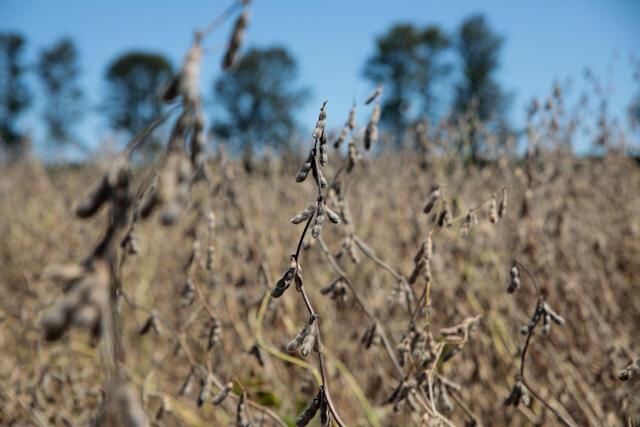
Recent dry conditions and little rain forecast for the coming weeks in central Argentina they fear that the current soybean campaign will suffer a “productive disaster” like that of 2018, when the harvest did not exceed 38 million tons, said the Rosario Stock Exchange (BCR).
Argentina is the world’s largest exporter of olive oil and flour. soy. But the 2021-2022 campaign was hit by a drought and heat waves between December and the first half of January that forced the stock market to reduce its harvest estimate for the grain by five million tons last month.
Currently, the Stock Exchange harvest estimate for soybeans is 40.5 million tons, 500,000 tons above the estimate in January due to a readjustment.
However, the BCR warned that the specter of the 2017-2018 campaign, when according to government data soybean production was 37.8 million tons due to a severe drought, runs through the Argentine fields.
The soybean strip of the provinces of Santa Fe, Córdoba and Entre Ríos “continues in a very delicate situation and (with) conditions of scarcity to drought in the soil,” explained the BCR, clarifying that as of mid-January parts of the north of the province of Buenos Aires received adequate rains.
“Few were the localities (of the Argentine agricultural nucleus) that eventually achieved a sufficient water load to rescue the crops and recover the water reserves of the soil,” he added.
In turn, the Stock Exchange pointed out that the climatic perspectives are not favorable for the oilseed, whose batches are going through important stages of determining productivity.
“It is very difficult to predict in these conditions what will happen with the rains in the third and fourth week of February, weeks that are key due to the great impact they have on first-class soybean yields in Argentina. But what can be observed today is definitely not encouraging,” the agency said.
‘La Niña’ gains ground again
The rainfall irregularities in the agricultural heart of Argentina occur at a time when the La Niña climatic phenomenon is present, which reduces the usual level of rainfall for that agricultural region.
Last month, experts saw a gradual decrease in La Niña as the southern summer passed, which began in late December. However, according to the BCR report, that horizon has changed.
“There is new bad news for Argentina regarding the weather: ‘La Niña’ has regained ground and its effect will not diminish as expected until a few days ago,” explained the Stock Exchange, adding that “the ghost of the productive disaster of 2018 envelops the oilseed 2021-2022″.
“Bad signs” for corn
Meanwhile, in its monthly crop report, the Stock Exchange maintained its production forecast of 48 million tons for corn 2021-2022, although it warned that “these are not good signs” the yields obtained in some crops made very early due to the adverse weather.
However, the BCR added that “it is necessary to wait for the harvest to begin to gain strength to evaluate the results.” The entity last month cut its production forecast for corn by 8 million tons due to the impact of the drought and high temperatures.
Argentina is the world’s second largest exporter of corn, after the United States.
Source: Gestion
Ricardo is a renowned author and journalist, known for his exceptional writing on top-news stories. He currently works as a writer at the 247 News Agency, where he is known for his ability to deliver breaking news and insightful analysis on the most pressing issues of the day.











